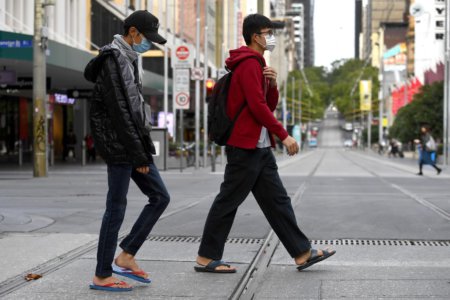
Australia’s slice of pie for international students could shrink further if its borders remain closed to international students. More than half of students with applications for Australian universities (53%) are considering switching to another destination if they can start on-campus learning sooner, said research by student recruitment firm IDP Connect. The country’s borders have been closed to international students for the better part of the year. Students stranded offshore are growing restless to return to campus and countries such as Canada and the UK, however, stand to gain if Australia fails to turn the tide.
Globally, international students overwhelmingly (92%) favour quarantining rather than deferring their studies, a 15% increase from June 2020. The majority of students heading to Australia (60%) said they were willing to pay a portion of the quarantine costs but expected assistance from their institution, while 22% stated they would pay for all quarantine costs and 18% were not willing to pay any costs at all. Many students (44%) are only willing to study online for three months before transitioning to face-to-face learning.
The findings are part of the third instalment of their International Student Crossroads survey, which examined the attitudes and behaviours of over 5,000 international students, current applicants and offer holders to higher education institutions across Australia, Canada, New Zealand, the UK and the US.
IDP Connect CEO Simon Emmett said their research has shown that there is a risk associated with being perceived as a country that is less “open for business”. “Countries that have communicated strongly that international students are welcome, such as the UK, have seen a rise in attractiveness compared to countries with stricter border controls, such as Australia. While New Zealand continues to lead in international students’ perceptions in student support and assistance, they are suffering the same overall perception challenges as Australia. This is likely due to the strict border closures,” said Emmett.
Australian universities brace for fewer international students next year
Would you rather quarantine or defer your studies? One study suggests students prefer the former #intlstudents #university https://t.co/TsqCxDJ8HT pic.twitter.com/uEc4uUMYQC
— Study International (@Study_INTNL) November 24, 2020
Australia has announced three pilot programmes to bring a small number of international students back to its shores. At the time of writing, only Charles Darwin University (CDU) said it is on track to welcome up to 70 international students from Asia on Nov. 30, 2020; the Australian Capital Territory (ACT) and South Australian programme have been delayed.
Australian universities risk a haemorrhage of international students if their borders remain closed. A study by education policy think tank the Mitchell Institute estimates over 300,000 fewer international students — half the pre-COVID-19 numbers — will be in Australia by July 2021 if Australia’s travel restrictions remain in place. The pandemic has already cut international student numbers who would normally be in Australia by over 210,000, it said. About 57%, or AU$21.4 billion, of the AU$37.5 billion associated with the international education sector comes from spending on goods and services.
Canada stands to gain from students’ waning interest to study in Australia amid a lack of indication over the reopening of its borders. The Immigration, Refugees and Citizenship Canada has allowed international students to enter the country beginning Oct. 20, 2020 if their designated learning institution (DLI) has an approved COVID-19 readiness plan in place. It’s government has also extended support for international students during the pandemic.
Speaking to SBS News, Australian-based migration agent Melanie Macfarlane said she would normally be helping students in Latin America travel to Australia, but are now pivoting their business to go to countries such as Canada and the UK rather at this point. International education consultant Rod Hearps said Canada and the UK have “high-level messaging and consistent messaging making it clear that the international students are still welcome”, unlike Australia.
Hearps warned of a slow recovery if Australia doesn’t take swift action, adding that “it can take five to six years to get back to the same sorts of numbers that we were at prior to the disruption.”










